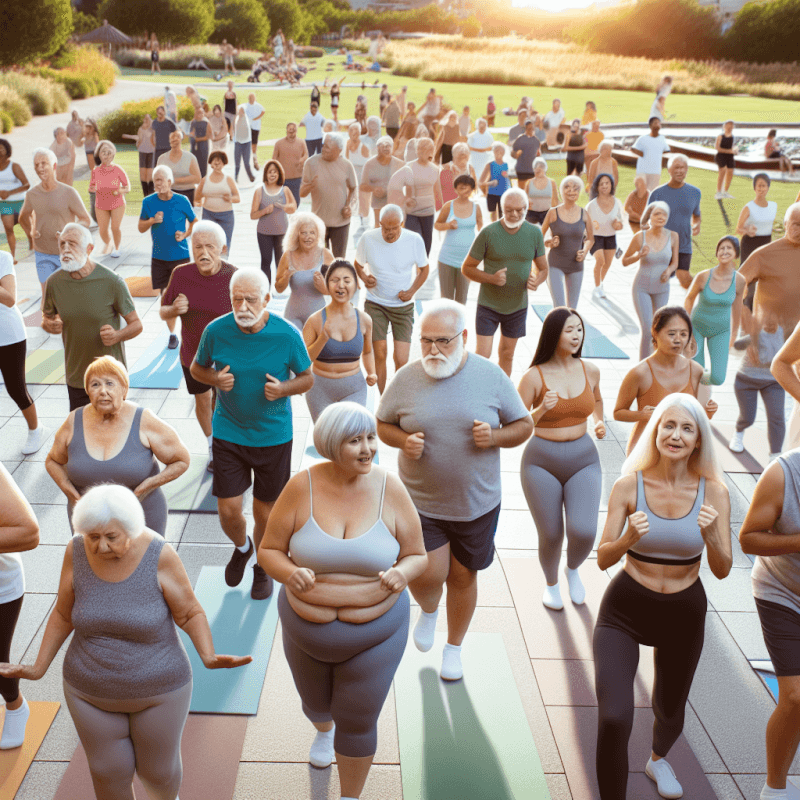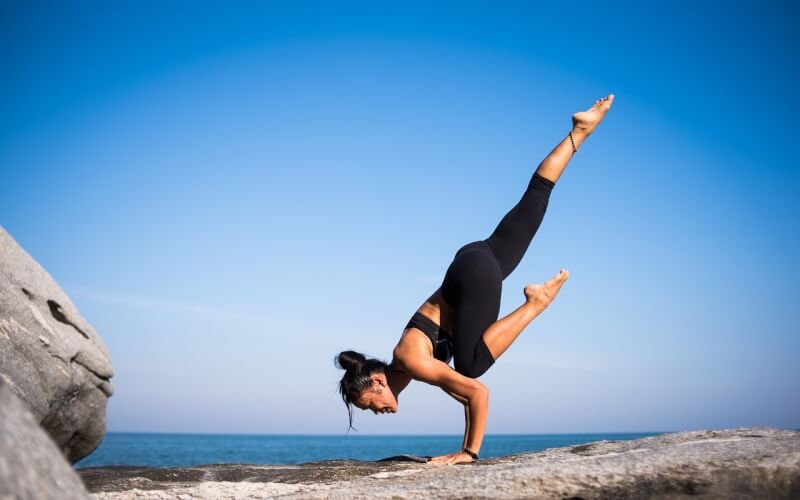Are you over 50 and struggling with your weight? It’s never too late to start incorporating exercise into your daily routine! In this article, we’ll explore the benefits of exercise for individuals over 50 who are overweight. Whether you’re looking to improve your overall health, increase your energy levels, or shed a few pounds, we’ve got you covered. With a friendly and supportive tone, we’ll discuss various exercise options that are suitable for your age group and fitness level. Get ready to embark on a journey towards a healthier and more active lifestyle!
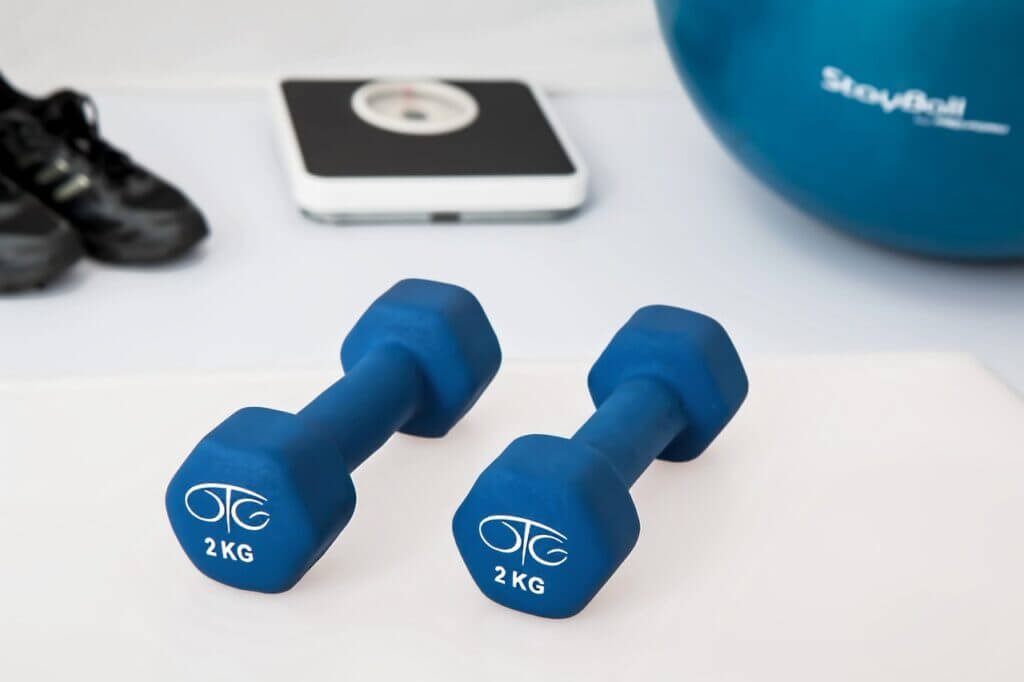
Benefits of Exercise for Over 50 and Overweight
Regular exercise provides numerous benefits for individuals over 50 who are overweight. Not only does it improve overall health and well-being, but it also helps manage weight, increase strength and flexibility, improve bone density, and boost mood. Engaging in exercise can have a significant impact on cardiovascular health, reducing the risk of heart disease, and promoting a healthier lifestyle overall. Let’s dive deeper into the benefits of exercise for individuals over 50 and overweight.
Improves Cardiovascular Health
One of the most significant benefits of exercise for individuals over 50 and overweight is the improvement of cardiovascular health. Engaging in aerobic exercises such as walking, cycling, swimming, or water aerobics can help strengthen the heart and improve circulation. Regular physical activity can lower blood pressure, reduce the risk of heart disease, and increase overall cardiovascular endurance.
Manages Weight and Reduces Body Fat
Being overweight can put individuals at risk for various health issues. Exercise can play a crucial role in managing weight and reducing body fat. By engaging in physical activities such as aerobic exercises and strength training, individuals over 50 can burn calories and shed excess pounds. Regular exercise increases metabolism and helps build lean muscle mass, which can aid in weight loss and weight management.
Increases Muscle Strength and Flexibility
As individuals age, muscle strength and flexibility tend to decline. This can lead to issues such as decreased mobility, difficulty performing daily activities, and an increased risk of falls. However, regular exercise can counteract these effects. Strength training exercises, using bodyweight, weight machines, resistance bands, or dumbbells, can help improve muscle strength. Flexibility exercises such as yoga, Pilates, and stretching can enhance overall flexibility, making daily movements easier and reducing the risk of injury.
Improves Bone Density and Reduces Risk of Osteoporosis
Another benefit of exercise for individuals over 50 and overweight is the improvement of bone density. Weight-bearing exercises, such as walking or strength training, help stimulate bone growth and prevent bone loss. This is especially important for women who are at a higher risk of developing osteoporosis after menopause. By engaging in regular exercise, individuals can strengthen their bones, reduce the risk of fractures, and improve overall bone health.
Boosts Mood and Reduces Symptoms of Depression and Anxiety
Exercise has powerful effects on mental health and well-being. Regular physical activity releases endorphins, also known as “feel-good” hormones, which can improve mood and reduce symptoms of depression and anxiety. Engaging in exercise can serve as a natural stress reliever, provide a sense of accomplishment, and increase overall happiness. The social aspect of exercise, such as joining a class or finding a workout buddy, can also combat feelings of isolation and improve overall mental well-being.
Types of Exercises for Over 50 and Overweight
When it comes to exercise for individuals over 50 and overweight, it’s essential to choose activities that are safe, enjoyable, and effective. There are several types of exercises that can cater to different interests and fitness levels. Let’s explore the different types of exercises suitable for this age group.
Aerobic Exercises
Aerobic exercises, also known as cardio exercises, are activities that increase heart rate and breathing for an extended period. Walking, cycling, swimming, water aerobics, and low-impact aerobics are excellent choices for individuals over 50 and overweight. These exercises are low-impact, meaning they are gentle on the joints while providing cardiovascular benefits. Aim for at least 150 minutes of moderate-intensity aerobic exercise per week for optimal results.
Strength Training
Strength training exercises focus on building muscle strength and improving overall body composition. For individuals over 50 and overweight, incorporating bodyweight exercises, weight machines, resistance bands, and dumbbells into their routine can be highly beneficial. Strength training not only helps increase muscle mass but also boosts metabolism, improves bone density, and enhances overall physical function. Aim for two to three strength training sessions per week, targeting all major muscle groups.
Flexibility Exercises
Flexibility exercises focus on increasing joint range of motion and improving overall flexibility. Yoga, Pilates, and stretching exercises are excellent choices for individuals over 50 and overweight. These exercises help improve posture, reduce muscle tension, and increase mobility. Engaging in regular flexibility exercises can assist in performing daily activities more easily and reducing the risk of injuries. Aim for at least two to three days per week of flexibility exercises, holding stretches for 15 to 30 seconds each.
Balance Exercises
Balance exercises are crucial for individuals over 50 as they help improve stability and reduce the risk of falls. Simple exercises like standing on one foot, heel-to-toe walk, and Tai Chi can greatly improve balance and coordination. Regularly practicing balance exercises can enhance overall physical function and increase confidence in daily movements. Aim to include balance exercises in your routine at least two to three times per week.
Getting Started with Exercise
When starting an exercise routine, it is essential to approach it with the right mindset and take the necessary precautions. By following a few simple steps, you can ensure a safe and enjoyable exercise experience.
Consulting a Healthcare Professional
Before embarking on any exercise program, it is recommended to consult with a healthcare professional. They can assess your current health status, provide personalized recommendations, and address any concerns or limitations specific to your health condition. Getting professional guidance will help ensure that you choose exercises that are suitable for your current physical capabilities.
Selecting Suitable Exercises
When starting an exercise routine, it is vital to select exercises that are appropriate for your fitness level and health condition. Consider your interests, abilities, and any limitations you may have. Choosing exercises that you enjoy will increase adherence to your exercise routine and make it more enjoyable in the long run.
Starting Slow and Gradually Increasing Intensity
It’s crucial to start slowly and gradually increase the intensity and duration of your workouts. This allows your body to adjust to the physical demands and reduces the risk of injury. Begin with shorter sessions of low-intensity exercises, gradually increasing the time and intensity as your fitness improves. Listen to your body and take breaks when needed, ensuring that you are challenging yourself without pushing beyond your limits.
Aerobic Exercises for Over 50 and Overweight
Aerobic exercises are an essential component of any exercise routine, especially for individuals over 50 and overweight. These activities help improve cardiovascular health, burn calories, and increase overall endurance. Here are some aerobic exercises suitable for this age group.
Walking
Walking is one of the most accessible and effective forms of aerobic exercise. It is a low-impact activity that can be done almost anywhere and requires no special equipment. Start with shorter walks, gradually increasing the duration and intensity as your fitness improves. Aim to incorporate brisk walking into your routine for at least 30 minutes a day, five days a week.
Cycling
Cycling is a great aerobic activity that can be done outdoors or indoors on a stationary bike. It is a low-impact exercise that is gentle on the joints while providing an effective cardiovascular workout. If cycling outdoors, ensure you wear appropriate safety gear and choose routes that suit your fitness level. Aim for at least 150 minutes of moderate-intensity cycling per week.
Swimming
Swimming is a fantastic low-impact exercise that works the entire body and provides excellent cardiovascular benefits. The water’s buoyancy reduces the stress on joints, making it an ideal exercise for individuals with joint or muscle pain. If you are new to swimming, start with shorter laps and gradually increase your distance. Aim for at least 150 minutes of moderate-intensity swimming per week.
Water Aerobics
Water aerobics classes are a fun and effective way to improve cardiovascular fitness while minimizing stress on the joints. These classes typically involve a combination of aerobic exercises and resistance training using the water’s resistance. Water aerobics is suitable for individuals of all fitness levels and can be tailored to meet individual needs.
Low-Impact Aerobics
Low-impact aerobics classes are designed to provide a cardiovascular workout without placing excessive stress on the joints. These classes typically involve rhythmic movements performed on the floor or using step platforms. They are a great option for individuals over 50 and overweight as they provide a low-impact, yet effective workout. Joining a class can also provide a social aspect, making exercise more enjoyable.
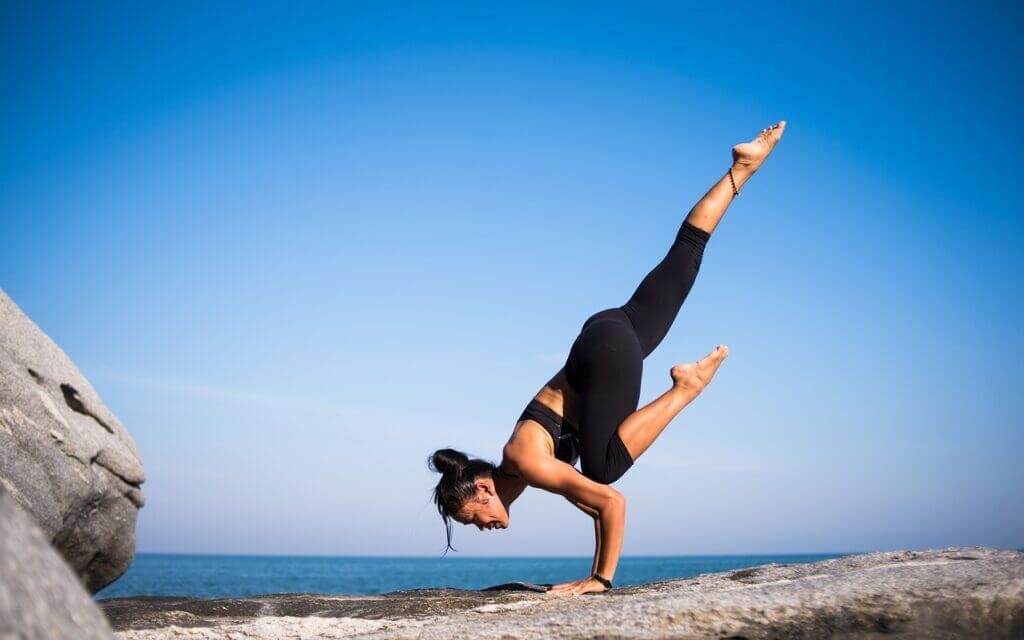
Strength Training for Over 50 and Overweight
Incorporating strength training exercises into your routine is crucial for individuals over 50 and overweight. Strength training helps increase muscle strength, improve overall body composition, and enhance physical function. Here are some strength training exercises suitable for this age group.
Bodyweight Exercises
Bodyweight exercises are an excellent option for individuals over 50 and overweight as they require little to no equipment and can be done anywhere. Exercises such as squats, lunges, push-ups, and planks engage multiple muscle groups and help build functional strength. Start with a few repetitions of each exercise and gradually increase as your strength improves.
Weight Machines
Weight machines at the gym provide a controlled and guided way to perform strength training exercises. They are designed to target specific muscle groups, making it easier to isolate and strengthen individual muscles. When using weight machines, it’s essential to start with lighter weights and gradually progress to heavier weights as your strength increases. Seek guidance from a fitness professional to ensure you use proper form and technique.
Resistance Bands
Resistance bands are portable, affordable, and versatile tools that can be used for strength training exercises. They provide constant tension throughout the range of motion, challenging the muscles in a different way than traditional weights. Resistance bands come in different levels of resistance, allowing you to gradually progress as your strength improves. They can be used for exercises such as bicep curls, lateral raises, and leg extensions.
Dumbbells
Dumbbells are another great option for strength training exercises. They are available in various weights and can be used for a wide range of exercises, targeting different muscle groups. Dumbbell exercises such as chest presses, shoulder presses, and bicep curls can help build upper body strength. It’s important to start with lighter weights and gradually increase as your strength improves.
Flexibility Exercises for Over 50 and Overweight
Flexibility exercises are essential for individuals over 50 and overweight as they help improve joint range of motion and overall mobility. Here are some flexibility exercises suitable for this age group.
Yoga
Yoga is a mind-body practice that combines physical postures, breathing exercises, and meditation. It offers numerous benefits, including improved flexibility, strength, balance, and stress reduction. There are various styles and levels of yoga, making it suitable for individuals of all fitness levels. Gentle yoga classes or beginner-level videos are a great place to start for individuals over 50 and overweight.
Pilates
Pilates is a low-impact exercise method that focuses on strengthening the core muscles, improving posture, and enhancing flexibility. It involves precise movements performed with control and concentration. Pilates exercises can be modified to suit individual fitness levels, making it suitable for individuals over 50 and overweight. Consider taking a beginner-level Pilates class or following instructional videos.
Stretching Exercises
Incorporating simple stretching exercises into your routine can significantly improve flexibility and reduce muscle tension. Stretching exercises can be performed both before and after your workout. Focus on stretches that target major muscle groups, such as the hamstrings, quadriceps, calves, and shoulders. Hold each stretch for 15 to 30 seconds, without bouncing or causing pain.

Balance Exercises for Over 50 and Overweight
Maintaining good balance is essential for individuals over 50, as it reduces the risk of falls and improves overall mobility. Here are some balance exercises suitable for this age group.
Standing on One Foot
Standing on one foot is a simple yet effective exercise for improving balance. Start by standing near a stable object, such as a wall or chair, for support if needed. Lift one foot off the ground and balance on the other foot for as long as possible. Aim to gradually increase the duration of balancing on one foot. This exercise can be performed multiple times throughout the day.
Heel-to-Toe Walk
The heel-to-toe walk is another exercise that challenges balance and coordination. Begin by placing the heel of one foot directly in front of the toes of the other foot, as if you are walking on a tightrope. Take small steps, trying to maintain your balance and not stepping off the line. Repeat this exercise for several steps, gradually increasing the distance as your balance improves.
Tai Chi
Tai Chi is an ancient Chinese martial art that focuses on slow, flowing movements and deep breathing. It is often referred to as “meditation in motion” and is known for its numerous health benefits, including improved balance, flexibility, and mind-body connection. Tai Chi classes, specifically designed for individuals over 50 and overweight, are widely available and a great way to improve balance and overall well-being.
Tips to Stay Motivated and Safe
Staying motivated and safe while exercising is crucial for long-term success. Here are some tips to help you stay on track and get the most out of your workouts.
Setting Realistic Goals
Set realistic and achievable goals that are specific, measurable, attainable, relevant, and time-bound (SMART). Breaking down larger goals into smaller milestones can make them more manageable and keep you motivated. Celebrate your achievements along the way and recognize that progress takes time.
Finding a Workout Buddy or Joining a Class
Exercising with a friend or joining a class can make workouts more enjoyable and provide motivation and accountability. Having a workout buddy or participating in a group fitness class can also offer social interaction and support, making exercise a fun and social activity.
Listening to Your Body and Taking Breaks When Needed
Pay attention to your body’s signals and listen to its needs. If you feel pain, dizziness, or excessive fatigue, it’s essential to take a break and address any potential issues. Pushing yourself too hard can lead to injury or burnout, so remember to give yourself permission to rest when needed.
Staying Hydrated
Hydration is key for optimal performance and safety during exercise. Make sure to drink plenty of water before, during, and after your workouts. Pay attention to the signs of dehydration, such as dry mouth, dizziness, or dark-colored urine, and replenish fluids accordingly.
Using Proper Form and Technique
Using proper form and technique while exercising is crucial for preventing injuries and maximizing the effectiveness of your workouts. If you are unsure about how to perform a certain exercise, seek guidance from a fitness professional or watch instructional videos to ensure you are using correct form.
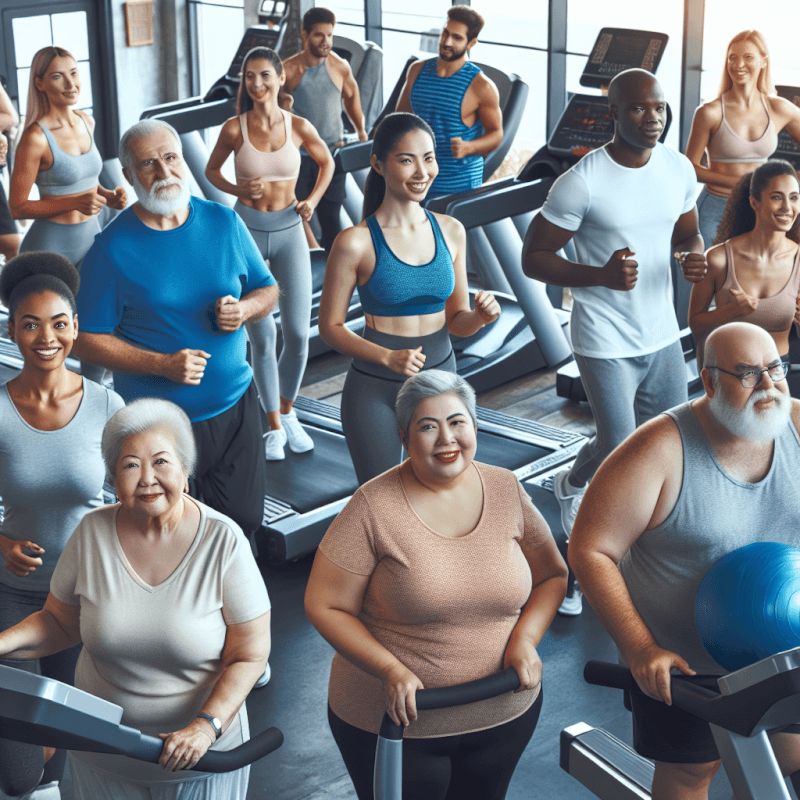
Creating a Routine and Progressing
Establishing a consistent exercise routine is essential for long-term success. Here are some tips to help you create a routine and progress in your fitness journey.
Setting a Regular Schedule
Find a time that works best for you and dedicate it to exercise. Consistency is key, so aim for at least three to five sessions per week. Whether it’s in the morning, during lunch breaks, or in the evening, having a regular exercise schedule will make it easier to stick to your routine.
Mixing Up Exercises and Activities
To prevent boredom and challenge different muscle groups, it’s important to mix up your exercises and activities. Incorporate a variety of aerobic exercises, strength training, flexibility exercises, and balance exercises into your routine. Trying new activities, such as dance classes, hiking, or recreational sports, can also keep your workouts fun and exciting.
Gradually Increasing Duration and Intensity
As your fitness level improves, gradually increase the duration and intensity of your workouts. Start by adding a few extra minutes to your aerobic exercises or increasing the number of repetitions in your strength training exercises. Challenging yourself progressively will help you break through plateaus and continue making progress.
Tracking Progress and Celebrating Achievements
Keep track of your exercise activities, including the duration, intensity, and any milestones achieved. This will help you see your progress over time and provide motivation to keep going. Celebrate your achievements, whether it’s reaching a certain weight loss goal, improving your strength, or completing a challenging exercise routine. Recognizing and celebrating your accomplishments will keep you motivated and inspired.
Conclusion
Exercise is undeniably beneficial for individuals over 50 and overweight. Engaging in regular physical activity can improve cardiovascular health, manage weight, increase muscle strength and flexibility, improve bone density, and boost mood. With proper guidance and precautions, anyone can engage in regular exercise, regardless of age or weight. Choose exercises that are suitable for your fitness level and health condition, start slow, and gradually increase intensity. Remember to listen to your body, stay hydrated, and use proper form and technique. By establishing a routine, mixing up exercises, and setting realistic goals, you can reap the numerous benefits of exercise and improve your overall well-being.
